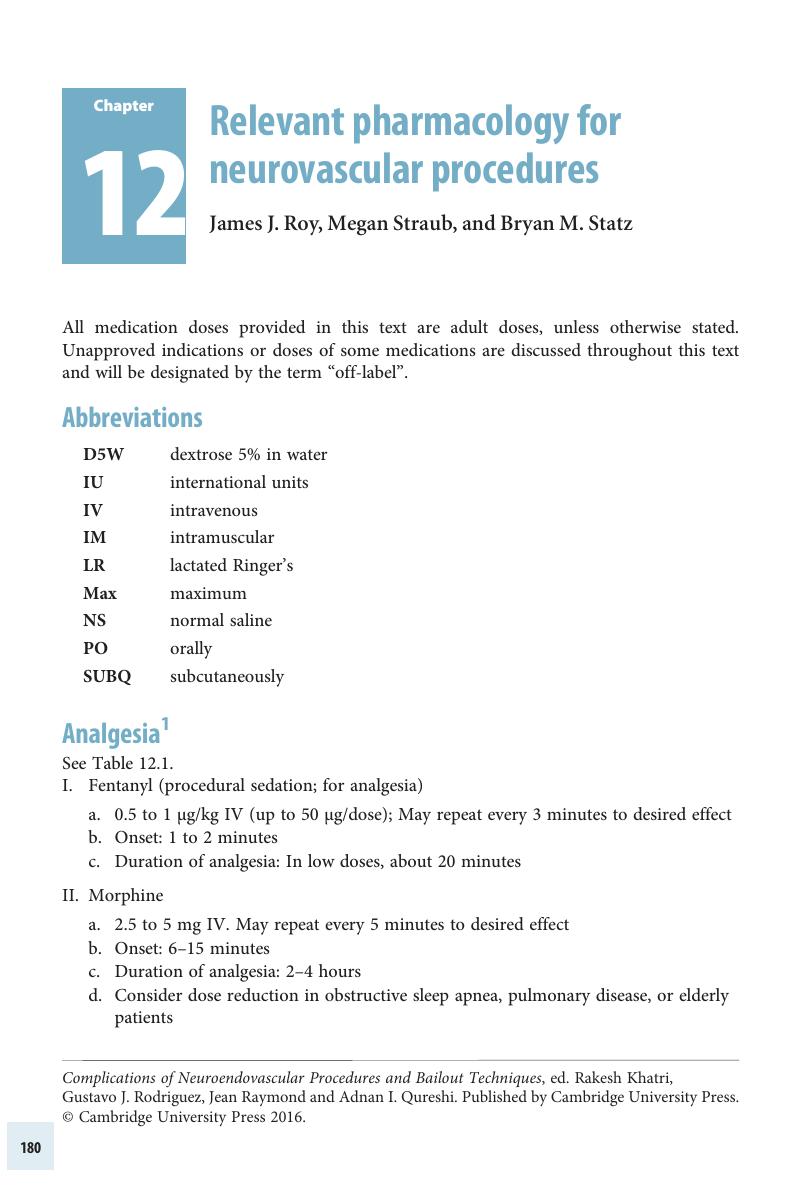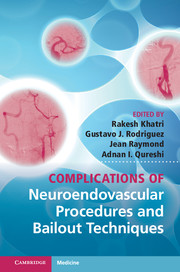Book contents
- Complications of Neuroendovascular Procedures and Bailout Techniques
- Complications of Neuroendovascular Procedures and Bailout Techniques
- Copyright page
- Contents
- Contributors
- Preface
- Chapter 1 Groin complications during neuroendovascular procedures
- Chapter 2 Complications in endovascular embolization of intracranial aneurysms: prevention and bailout techniques
- Chapter 3 Complications associated with embolization of arteriovenous malformations and fistulas
- Chapter 4 Complications during intracranial angioplasty and stent placement
- Chapter 5 Complications during the intra-arterial treatment of ischemic stroke
- Chapter 6 Carotid angioplasty and stenting: complication avoidance and management
- Chapter 7 Complications with extracranial stenting other than carotid stenting
- Chapter 8 Complications during head and neck embolization
- Chapter 9 Complications during endovascular provocative testing and bilateral inferior petrosal sinus sampling
- Chapter 10 Role of neurocritical care in prevention and treatment of acute respiratory, cardiovascular, and neurological complications in the angiographic suite
- Chapter 11 Periprocedural planning for neuroendovascular procedures
- Chapter 12 Relevant pharmacology for neurovascular procedures
- Chapter 13 Radiation-related complications of neuroendovascular procedures
- Index
- References
Chapter 12 - Relevant pharmacology for neurovascular procedures
Published online by Cambridge University Press: 05 September 2016
- Complications of Neuroendovascular Procedures and Bailout Techniques
- Complications of Neuroendovascular Procedures and Bailout Techniques
- Copyright page
- Contents
- Contributors
- Preface
- Chapter 1 Groin complications during neuroendovascular procedures
- Chapter 2 Complications in endovascular embolization of intracranial aneurysms: prevention and bailout techniques
- Chapter 3 Complications associated with embolization of arteriovenous malformations and fistulas
- Chapter 4 Complications during intracranial angioplasty and stent placement
- Chapter 5 Complications during the intra-arterial treatment of ischemic stroke
- Chapter 6 Carotid angioplasty and stenting: complication avoidance and management
- Chapter 7 Complications with extracranial stenting other than carotid stenting
- Chapter 8 Complications during head and neck embolization
- Chapter 9 Complications during endovascular provocative testing and bilateral inferior petrosal sinus sampling
- Chapter 10 Role of neurocritical care in prevention and treatment of acute respiratory, cardiovascular, and neurological complications in the angiographic suite
- Chapter 11 Periprocedural planning for neuroendovascular procedures
- Chapter 12 Relevant pharmacology for neurovascular procedures
- Chapter 13 Radiation-related complications of neuroendovascular procedures
- Index
- References
Summary

- Type
- Chapter
- Information
- Publisher: Cambridge University PressPrint publication year: 2016



